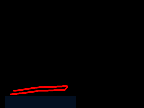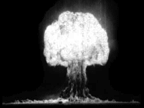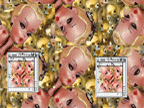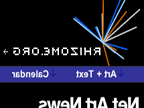:: Sunday, February 22, 2004 ::
FIX OF THE WEEK:
[betacity]
[wigged productions]
[Fabulous Laboratory]
 NEW.WRITING:EVOLUTIONS
NEW.WRITING:EVOLUTIONSBY: ISABEL SAIJ
This week, Net Art Review features "Evolutions," writings on"avec détermination" ("with determination") by Antoine Schmitt.
Originally published in French by Apelse. "Evolutions" is available on Net Art Review in English, German and French language versions.
click here for the complete article.
Related links:
http://www.apelse.asso.fr/concours2003/
http://www.apelse.asso.fr/concours2003/resultats.htm
 ORIGINAL POST: Sat Feb 07, 12:09:12 PM
ORIGINAL POST: Sat Feb 07, 12:09:12 PMBY: Garrett Lynch
Long gone are the days when net art almost certainly crashed your browser because of a desire to push the limits of the limited technology, to highlight flaws/holes/opportunities, and to counter the ever controlling grasp of companies such as Microsoft over the web browsing experience with Internet Explorer.
Today, browser crashing has become a real test of programming skill for a skilled few, or a display of misuse/abuse of too many plug-ins by a surplus of bad web designers without the vision to look beyond one browser or system. But let’s look back here on the skilled few, the programmers.
One site that does not profess to be net art in itself--but instead displays a dedication to inventive ways to crash your browser--is the bomb site. Essentially a collection of crash techniques, the site has become a snapshot of technologies, browsers at a certain period of time--1998 to be specific. Much of the crash attempts are well documented and long fixed browser issues, so they no longer work on many browsers/systems; yet, they are still interesting to watch for their purity of form and lack of content.
The collection of eleven bombs listed with catchy titles on the site such as "invincible alert dialogue" and "while loop processor hog" strikes me as if it were presented as a collection of music on an album: an early release in experimental electronica, interesting to experience at least once and look back on occasionally, yet no longer cutting edge. Click and watch the crash at your own risk.
 ORIGINAL POST: Thu Feb 12, 02:21:42 PM
ORIGINAL POST: Thu Feb 12, 02:21:42 PM BY: Peter Luining
Computerfinearts’ (CFA) latest update gives us new works by Antonio Mendoza, Peter Horvat, Andy Campbell, and Olia Lialina. This update brings the number of artists in the collection to 54, while another 62 are ready to join. If we take a look at who is in the collection and with what kind of work, we see that the CFA collection is probably growing to become the most important collection of net art in the world.
Rhizome's ArtBase, which hosts a huge amount of information and links to net-art works, could somehow be seen as a counterpart to CFA’s. Both offer a huge amount of net-art works and can be seen as a collection, but the similarities stop there; because where CFA hosts the original works on its server, Rhizome offers a collection of links--links that make its ArtBase vulnerable to linkrot (= dead links), which, in fact, is annoying, especially when you keep in mind that you have to pay to get access to this resource.
On the other hand, Rhizome's ArtBase offers a lot of additional information with its linked artworks, something that’s lacking in a lot of works presented at CFA. But then again, CFA shows a selection of artists that can be seen as the cream of the net (you get selected for it), while the relevance to net art of some of the works in Rhizome’s ArtBase (you have to submit works) is at the very least questionable. But maybe this should not be seen as a problem, since, from what I understand, the reach of Rhizome’s ArtBase is meant to be as vast as possible.
Conclusion: if you want to do research or are interested in net art, start with a look at CFA. Here you find artists and works that are important to net-art history; besides that you'll find links to all individual sites of artists presented. If you need to do deep research, you’ll probably be better off with Rhizome's ArtBase and the Rhizome site as a whole because it really offers a vast amount of information.
And, of course, there's a sort of in between alternative: net.art connexion. This project started off as a sort of protest to Rhizome becoming a paid service in 2003. The net.art connexion site contains copies of all links you can find in Rhizome's ArtBase --and more since you also can submit links. Access to the site is free but it misses all the extra info that makes Rhizome’s collection of links more interesting. Still it's worth a visit because the links are ordered in a better way Rhizome's ArtBase, and, of course, you don't have to pay a dime for all the information.
Computerfinearts
Rhizome
net.art connexion
 NEW WRITING: supplement to Peter Luining’s post of Thu Feb 12, 02:21:42 PM
NEW WRITING: supplement to Peter Luining’s post of Thu Feb 12, 02:21:42 PM BY: Vladimir Kovacevic
RE: Afterrhizome
It is about a year ago that I started the website Afterrhizome as a response to Rhizome’s politics. A lot of things happened in the last year, so it’s time for me to look back and evaluate.
In the first place, we saw the "evil genius" Mark Tribe leave the Rhizome ship and get succeeded by Rachel Green. Second we saw Rhizome merge with the New Museum (New York). In a press release by the New Museum, they said that "Rhizome.org will operate as an affiliate of the New Museum." But the exact (practical) position of Rhizome in this whole merger stays unclear. This is also the case for its famous artbase that now seems to fall under the responsibility of the New Museum. I say seems because its exact status is unclear. There are no documents online that clarify its status. Nor were there any serious online discussions held about its status. This leads me to the conclusion that artists who are participating in the Rhizome community just don't care about this issue, or other matters that have come up so far, like leadership and legal issues.
Another point of critique is derived from a recent article Peter Luining wrote for Net Art Review. Here, Luining compares Computerfinearts’ (CFA) collection with Rhizome's ArtBase. But where Luining still sees something positive in Rhizome's ArtBase (he wrote that "Rhizome's artbase offers a lot of additional information with its linked artworks [which is worth paying for]"), I only see negative points. This is because:
1. You have to pay to get access to their ArtBase that is made out of freely delivered content by its participants, information that in almost all cases can also be found for free with some Googling.
2. Their artbase is a collection of links that is subject to rot. And why would you pay for a service that is not even trying to preserve the most interesting part, which is the artwork.
Another point that I missed in Luining's analysis is that of the status of the work. I can only point to older information for works at Rhizome (see http://www.geocities.com/afterrhizome/
AfterRhizomeCritique.htm), while, from what I understand, there is a clear contract for the works that are hosted by CFA. If we compare the two, it is clear that the artist gives away a link to Rhizome (which is not problematic) and the information attached to that link becomes property of Rhizome (which can be seen as problematic); while at CFA, the artist puts up a work (and maybe some information), which is preserved with all rights still belonging to the artist. It is clear that the legal structure Rhizome is providing is not in favor of the artist.
My last point of critique is an argument I also stated a year ago, which only shows that nothing has changed. While Rhizome continually seems to be in need of money--which they need badly in order to keep the community going--they are organizing competitions with big money rewards. This year's competition offers money rewards from $1,500 to $3,500 and the theme is "games" (how originally chosen).
So far, that’s the inherent critique of Rhizome. Now, let’s move on to the practical situation.
Though Rhizome seems to have survived, it is no longer what it was originally, before all the massive changes. On the front page, there is a lack of quality articles written by respected or talented writers. Also, the works that get into the ArtBase lack relevance, in a lot of cases, to any net-art community or net art as a whole. Rhizome has become a sort of Disney-looking site, attracting people who obviously go for a brand name instead of doing some search for them selves. Why else would they go to Rhizome when there are free and, in some cases, even better alternatives?
So what about these alternatives? An interesting alternative to Rhizome seems to be the ever-developing site of furtherfield. Over the last year, we saw its content and participants continually multiply. Because its structure is more or less open source, participants don't have to fear for Rhizome-like situations (that is, having to pay to get to your own content).
That said, there are other sites that are developing and doing great. For example, the German, theoretical, Betacity site that keeps delivering great writings. Another interesting site that seems to keep on going strong is Net Art Review which puts out a lot of interesting items weekly. But not everything mentioned in my link list is doing so well. An example of this is the net-art.org portal site, though recently there seems to be some activity again; new items just seem to pop up only two times a month, and that's just too little for a portal. A great miss, and probably the greatest miss for the net-art community, is the disappearance of Dr. Reinhold Grether’s net-art links that was by far the largest collection of net-art links on the web.
http://www.geocities.com/afterrhizome
http://www34.brinkster.com/afterrhizome
http://www.joinme.net/afterrhizome